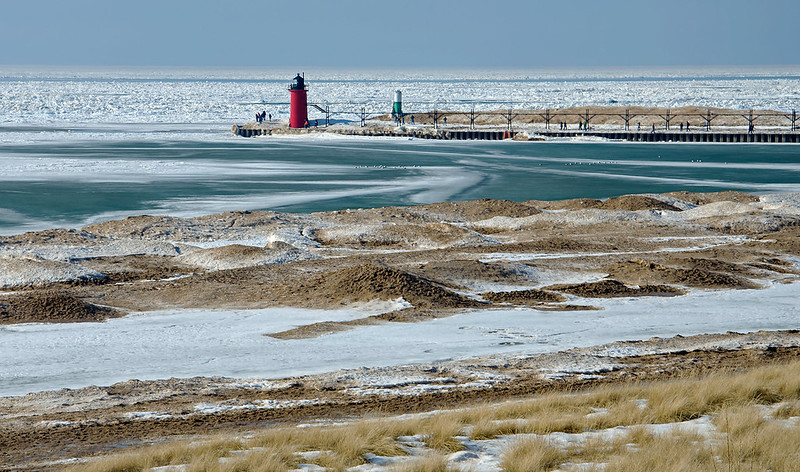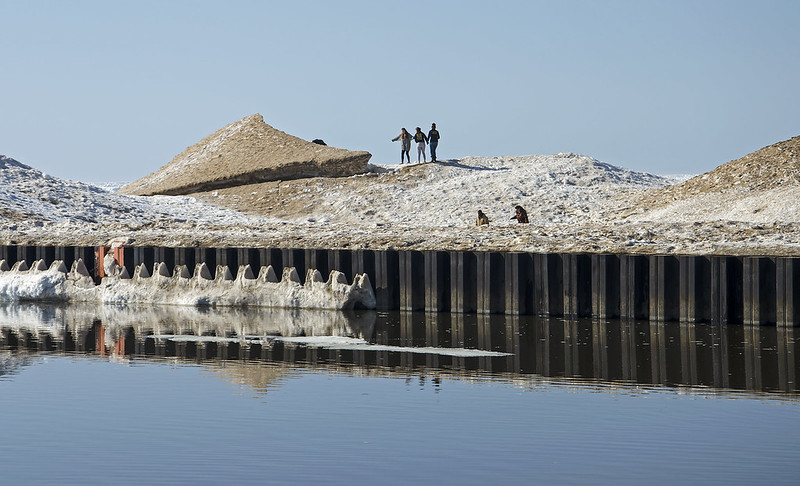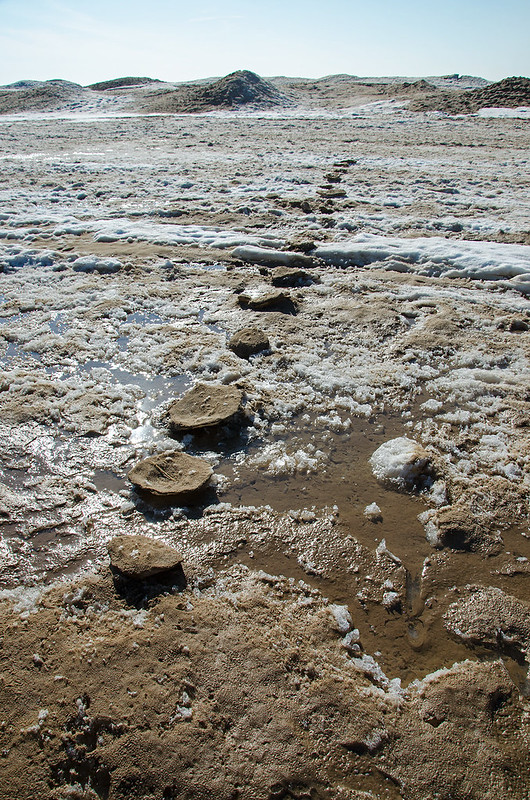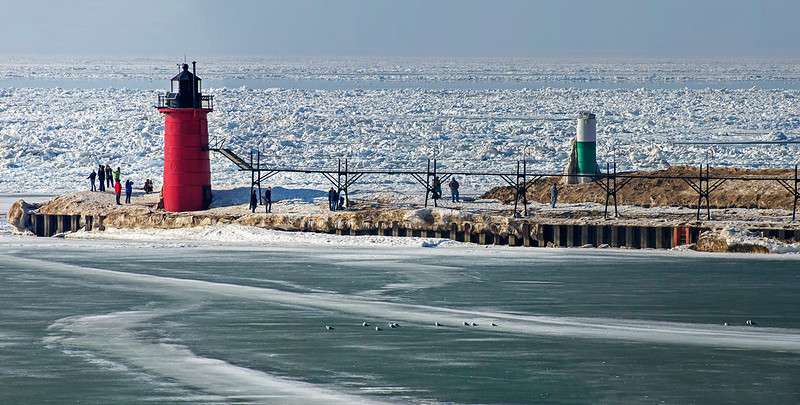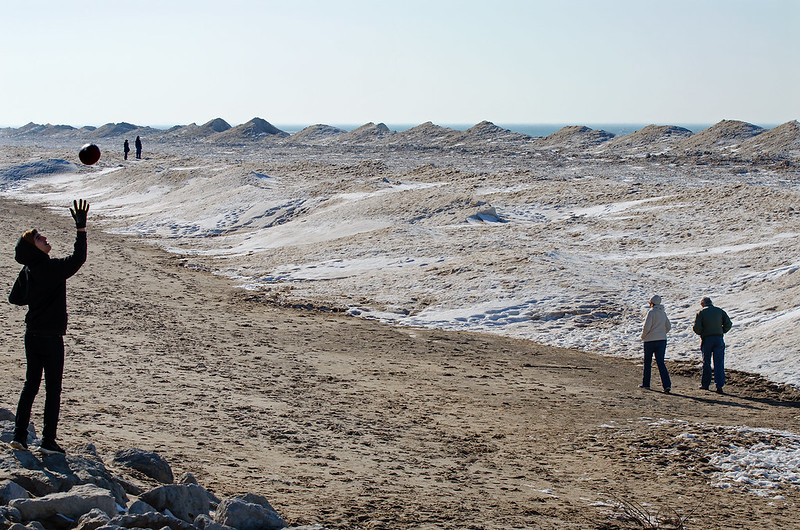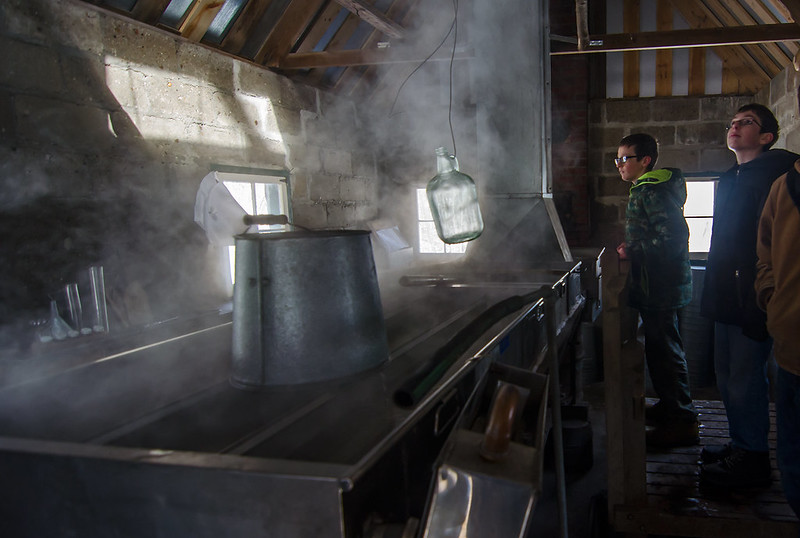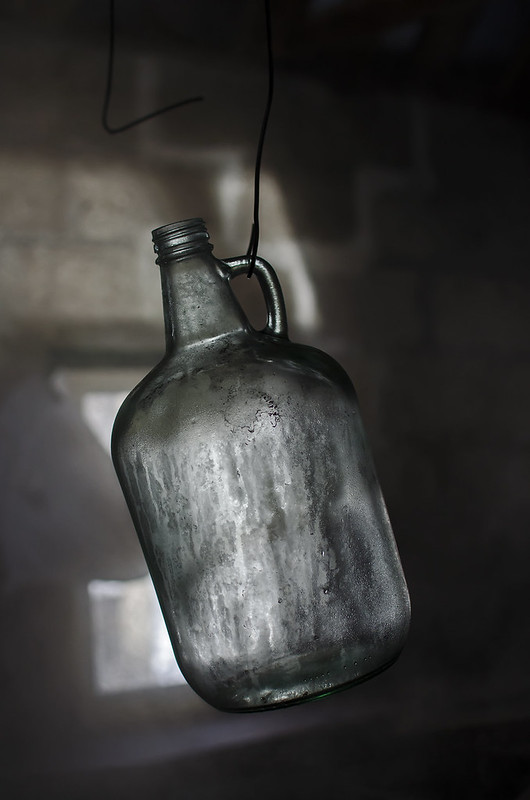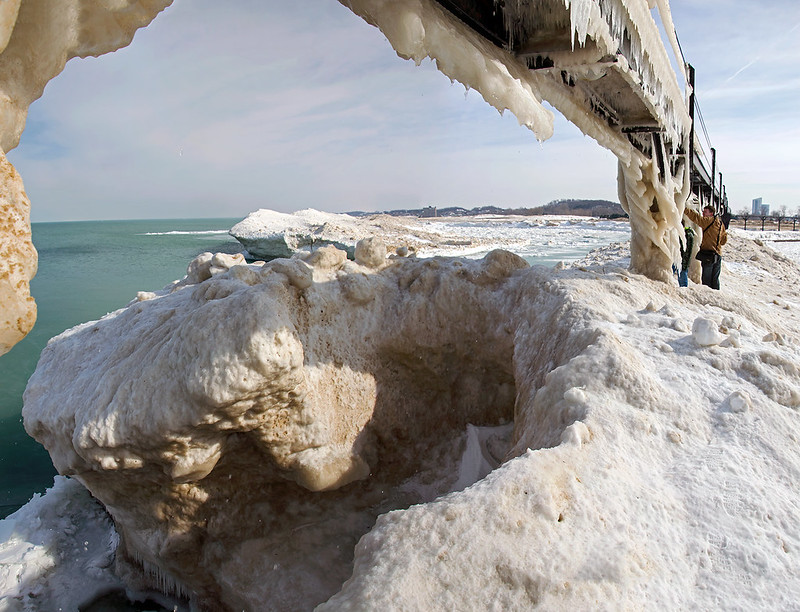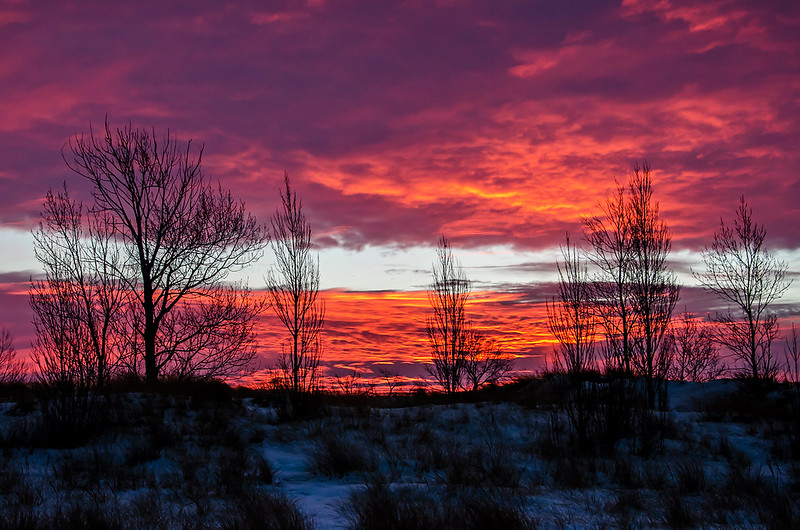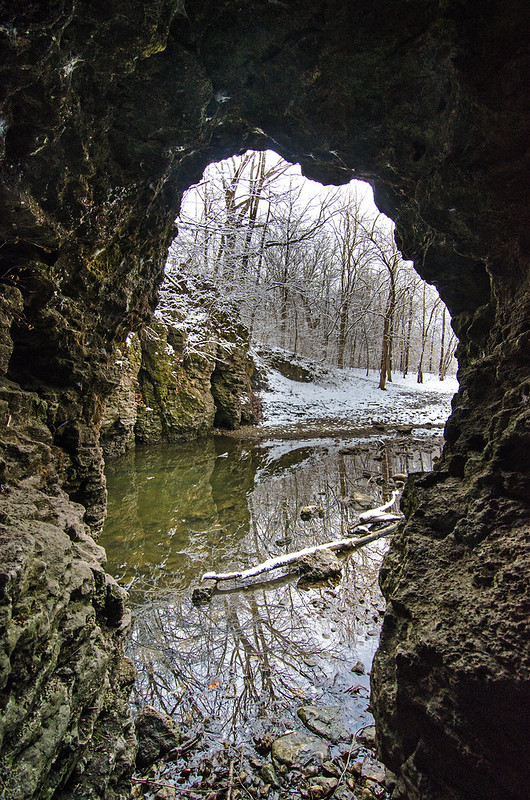
A spring snowfall highlights the walls of the canyon locals call "The Indian Caves". This small canyon is riddled with holes and caves its entire length. The elevation change is approximately 30 feet, with small waterfalls near the end of the canyon where the stream empties into the Kankakee River.
This cave was large enough to walk into, but only about 25 feet long; just deep enough for the walls and ceiling to create a dramatic frame for the snow covered woods on the other side of the stream.
Not the largest or most dramatic canyon in Illinois, it is, however, a very interesting place to visit and explore. Located in Bradley, Illinois, just a few meters away from the Kankakee River, and about a 3/4 mile hike from the nearest parking, one gets the feeling of being much farther away from town than they really are, even though the parking area is right in the business district of the town.
